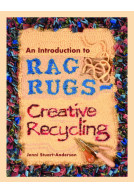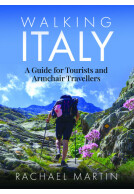Seasonal Plant Dyes (Paperback)
Create Your Own Beautiful Botantical Dyes, Plus Four Seasonal Projects to Make
Imprint: White Owl
Series: Crafts
Pages: 104
ISBN: 9781526747235
Published: 22nd January 2020
Last Released: 13th July 2022
(click here for international delivery rates)
Need a currency converter? Check XE.com for live rates
| Other formats available | Price |
|---|---|
| Seasonal Plant Dyes ePub (40.5 MB) Add to Basket | £6.99 |
This beautifully illustrated book takes you on a botanical journey through the year, showing you how to create colourful and environmentally friendly plant dyes. You’ll learn sustainable methods of growing and harvesting plants; the tools and techniques required to extract dye; which fabrics and yarns to choose; and the simple method of using soya milk as a fixative, to ensure rich and long-lasting colours.
The book includes easy-to-follow tutorials explaining how to make four stunning pieces using seasonal plant dyes: a linen cushion cover, embroidered picnic blanket, hot water bottle cosy, and quilt.
Rating: 5 out of 5 stars
NetGalley, Katie Smith
Lovely and informative book, perfect for yarn artists, crafters, sewists and people curious about natural dyeing methods.
Hall explains the foundations of dyeing, taking us on a botanical journey through the year. She shares advice on sustainable methods of harvesting (from the wild and your garden); about fabrics and yarns and how they behave when dyed… all in simple to follow tutorials… in this beautiful, informative and uplifting book.
Embroidery magazine
A new craft series from White Owl books will bring some colour to your designs. Quilters will enjoy the practical projects in Modern Rainbow Patchwork Quilts, Sewing Animal Dolls is fun for needlework enthusiasts and Seasonal Plant Dyes is a guide to colouring fabrics the environmentally friendly way using plants and flowers.
Woman's Weekly, June 2020
Seasonal Plant Dyes walks you through the seasons and shows you the plants you can use to make your own easy ecological plant dyes. There's sexy red bay leaf dye and vibrant green nettle in spring, summer's bright yellow dyer's chamomile in autumn and a warm burnt orange made by eucalyptus leaves in winter.
Amateur Gardening, June 2020
There are chapters on tools, fabrics and the mordants (such as soya milk) needed to keep colours vivid. Finally, there at items to make and dye each season, from cushion covers to snuggle hot water bottle swaddling. It makes collecting and dyeing look easy and fun!
I learnt some amazing facts about plants on reading this book. Nature fools us all in to thinking yellow flowers would produce various shades of yellow dyes and all leaves would give green dyes of different hues. This is not so! Who would have believed for instance that a dark purple Buddleia flower would produce a dye of buttercup yellow.
For the Love of Books
104 pages of fascinating information and I can’t wait to try my first dye!
A well written book that’s a delightful and interesting read.
As featured by
Gardens Illustrated, April 2020
I found this book incredibly exciting, I read it quickly and avidly and then had to pick it up and read through it again more carefully. I am now absolutely determined to dye my own fabric this year and I shall report back.
The Blackberry Garden
Read the full review here
What a delightful book! Well laid out, with beautiful photography.
Amazon Customer, Jayne
Who knew that plants from your garden and the hedgerows could produce such a kaleidoscope of dye colours? I can't wait to experiment with some of these, particularly being as I have just learned to use a weaving loom. I foresee hand-dyed wool in my future ... How exciting! Thank you, Alicia Hall.
Read the full review here
Many of the plants used are commonly available either from the garden or can be foraged for in the wild: nettle tops, mint, ivy, bay leaves, forsythia, buddleja, lavender, hypericum, dahlia, rosemary eucalyptus, alder cones, elderberries and walnuts can all produce entrancing nuanced colours. The book also contains a series of projects you can undertake with your dyed fabric including a patchwork quilt and a hot water bottle cover.
About My Generation
When you undertake natural dyeing you are experimenting. The results can be a bit unpredictable but that is all part of the magic. It is also a slow and gentle process which can help alleviate stress – I can’t wait to try.
Read the full review here
This book takes you through the process of growing, harvesting and using plants in a sustainable way to create natural dyes as well as using natural fixatives. It has beautiful photography and is a very-much needed book about dyeing in an environmentally friendly way.
NetGalley, Naomi Clarke
This lovely little book will inspire fiber artists of all types to delve into dyeing their own custom materials. Although Alicia Hall’s plant sources in the UK are significantly different from mine in Northern California, her clear and beautifully illustrated instructions had me observing with a very different eye the plants on my morning walk. I look forward to rosemary, walnut, lavender and bay leaves steeping in my dye pots very soon.
NetGalley, Melissa McDaniel
It is utterly accessible with plants readily available.
NetGalley, Helen Leighton-Rose
Rating: 5 out of 5 stars
NetGalley, Jessica Murdock
This book is a great guide to learning how to make plant dyes. It's full of wonderful instructions and lovely pictures. It's one I'll be returning to again and again.
There is a particular beauty and perennial appeal with the more subtle, gentle, and less saturated natural dyes. This book provides an accessible introduction to the methods, tools, and plants necessary to get started. The introductory chapters (~35% of the page content) cover harvesting plants, choosing materials to dye, tools, mordanting with soya milk (new concept to me), dyeing basics, and some alternative preparations with metal and oxides.
NetGalley, Annie Buchanan
The rest of the book is split into seasonal preparations and an abbreviated herbal with 5 plants for each season. Each of the seasonal chapters also includes a simple project tutorial such as cushion cover, embroidered picnic blanket, water bottle cover, and pieced quilt.
The pictures are appealing and restful. The author emphasizes safety and (where applicable) organic and easily sourced ingredients. The included projects are very simple and appealing. Natural dyeing is an experimental and experiential craft. It is almost impossible to get consistent results and the author's writing style goes with that flow.
I loved the easy and accessible prose and the lovely clear pictures.
Rating: 5 out of 5 stars
NetGalley, Richelle Rodarte
This book is fantastic and if you want to learn how to make plant dyes this book is for you. It’s packed full of great in-depth instructions and pictures. I never realized how complicated using plant dyes can be and I’m very impressed by the authors expertise. This book exceeded my expectations and I loved reading it.
Rating: 5 out of 5 stars
NetGalley, Leyla Johnson
This is one of the nicest books on plant dyeing I have seen for awhile. Very well laid out with lots of pictures and good information to go with them. The plants are ones that are easily obtainable and are grown in most gardens - I grow all apart from madder, woad and alkanet in mine.
The information about when to pick, part to use and colours that can be expected are really useful, as are the colour pictures. The book is separated into seasons and each season has a project to aim for with the plants which are available at these times.
I really recommend this book for both beginners and experienced dyers, just a lovely easy book with plenty to learn from.
I liked this book. I've become curious about dying fabric with plant dyes ever since my mother took a class on it and we searched different methods on the internet, like adding salt, how to change the colors with the pH and so on. So this book really helped because I think it's a good beginners book because it tells you how important it is to use natural dyes for the enviroment and yourself, and how to use those plants in a way that it can bring the best result and also bring more life to that plant. I think the way the author explained the harvesting of different parts of plants was really interesting and clear. And I think this is a good beginners book and the first step to understand this method and start to play with it. I really enjoyed reading it.
NetGalley, Laura Balsells
Rating: 5 out of 5 stars
NetGalley, Patricia Bishop
As a weaver, dyer, spinner the subject is close to my heart. If you have ever vaguely considered natural dyeing then buy this book.
Beautifully Illustrated the photography alone is tempting. Excellent explanation regarding the safety of natural dyeing and what plants are toxic and have to be avoided.
Natural dyeing is a slow craft and all the better for that. Whilst learning what to use for dyeing one learns more about fabric and plants, creating different shades on different fabrics from the same plants etc.
How to harvest and store plant materials in depth and how to select suitable fabrics and yarns.
Tools and mordants are especially detailed, safety being important. How to dye and dispose of the dye itself.
Dyeing is not complicated with such good information.
As each page is turned I wanted to begin a project. It’s a very thorough and thoughtful, beautiful book..
Make a crafter you know very happy if gifted to them, or simply treat yourself!
I rarely give 5 stars but this super book deserves it.
All in all, this is a good addition to the ever-increasing library of plant dye books out there. All of them are great reads, as is this one.
NetGalley, Alicia Bayer
This beautifully illustrated book takes you on a botanical journey through the year, showing you how to create colourful and environmentally friendly plant dyes. You’ll learn sustainable methods of growing and harvesting plants; the tools and techniques required to extract dye; which fabrics and yarns to choose; and the simple method of using soya milk as a fixative, to ensure rich and long-lasting colours.
NetGalley, Janet Pole Cousineau
The book includes easy-to-follow tutorials explaining how to make four stunning pieces using seasonal plant dyes: a linen cushion cover, embroidered picnic blanket, hot water bottle cosy, and quilt.
I love the way this book is structured. In order to fully understand how to use the dyes in a given season to make the accompanying project, those first six chapters are must-reads. They cover how to harvest plants for maximum color yield, how to choose fabrics with a fiber content with which the dyes can react, what tools you'll need, and various dye processes and recipe additions such as lemon juice or vinegar (acids) and chalk or wood ash (alkalis).
NetGalley, Rachel Pollock
About Alicia Hall
After discovering plant dyeing in a horticultural book while working as a gardener, Alicia drew on her education in fashion design to experiment with plant dyes and textiles, creating colourful dyes using the plants that grew in the gardens that she worked in. Since growing her passion into a thriving small business, Alicia now spends her time cooking up plant dyes and making textile products in her home studio in the heart of the Wiltshire countryside, where she lives with her husband and son.




















